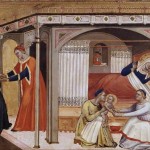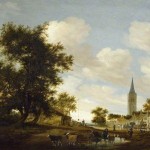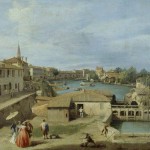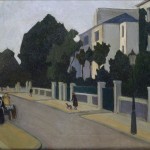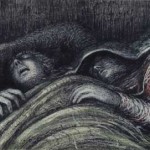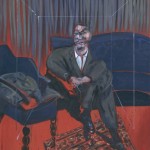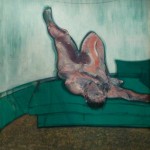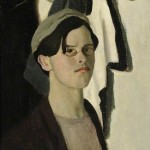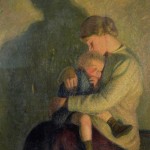The last couple of months have been somewhat hectic with my Art Appreciation talks at the Ashmolean. I did a four afternoon session on Italian Renaissance paintings, followed immediately by four weeks on ‘The Great Outdoors’ – then a week later a Study Afternoon on the current Henry Moore & Francis Bacon exhibition (which I titled ‘Unlikely Twins’) and lastly a full afternoon ‘Tea-Lecture’ on the artist William Rothenstein. So let’s unpack all that!
It is important to remember that, apart from the big lectures, my aim is to work in the Ashmolean galleries talking about, discussing, exploring, and arguing about, the works in the Ashmolean collection – hence ‘Art Appreciation’ rather than ‘Art History’.
Italian Renaissance Painting
In this series of ‘explorations’ we talked about how the works were produced, the role of the skilled artisan (the ‘artist’), the place and role of the Patron, the intended physical siting of the work, and the social and cultural context. In this latter respect it became clear that the context of early Italian painting was essentially ‘religious’ – and a particular work proved a rich point of exploration – that work is ‘The Birth of the Virgin Mary’ by an anonymous artist of the 14th century.
The Birth of the Virgin Mary : Master of the Ashmolean Predella : Italian 14th cent : Ashmolean
What emerged were a number of interesting points. Firstly, that this was tempera paint on panel, as opposed to oil paint on canvas of later Italian work. Secondly, that this was a panel from a large altar-piece – and that many art galleries throughout the world also have such parts of an altar-piece, cast aside when later centuries found them not to their liking. Thirdly, that what appeared to be a biblical story is in fact no such thing, but draws upon the popular, and Church approved, late medieval book ‘The Golden Legend’ where much of our ‘history’ of saints as well as biblical figures derives. Our forays into later Italian Renaissance painting led to an appreciation of a changing society, where things of this world became more important, that patronage was no longer confined to the Church, and that the discovery of oil-paint enabled larger paintings to be produced on canvas which was much lighter than a wooden panel.
The Great Outdoors
This series of afternoons explored what was meant by, literally, outside the door – and therefore it was not a series that concentrated just on landscape. The development of landscape painting was, of course, important – such figures as the Dutch 17th century Ruisdael family – or the Welsh late 18th century painter Thomas Jones, and on to the work of people like Turner and the French School of Corot to the Pissarro family. But courtyard, farmyard, and urban scenes were also analysed and discussed.
A Draw-Well with Cattle before Beverwijk Church : Salomon van Ruysdael : Dutch 17th cent : Ashmolean
A View of Dolo on the Brenta Canal : Canaletto : Italian 18th cent : Ashmolean
Queen’s Grove, St John’s Wood : Robert Bevan : British early 20th cent : Ashmolean
‘Unlikely Twins’
After a brief discussion of the British art scene after the second world war we spent our time in the Bacon/Moore exhibition – discussing and exploring influences, similarities and dissimilarities, and the way each tackled the human form.
Henry Moore : Three Piece Recloning Figure No 1 : 1961/2 : Yorkshire Sculpture Park
Henry Moore : Pink and Green Sleepers : 1941 : Tate Gallery
Francis Bacon : Seated Figure : 1961 : Tate Gallery
Francis Bacon : Lying Figure No 1 : 1959 : Leicester
William Rothenstein
This afternoon talk followed on from one earlier in the year I gave on the origins and influence of the Slade School of Fine Art. William Rothenstein, a product of the Slade in the late 19th century, went on to become a major and influential figure in the art world – from his contacts in France with such people as Camille Pissarro, Edgar Degas, Henri de Toulouse-Lautrec , and the sculptor Auguste Rodin. We followed William Rothenstein’s career from being the son of a wealthy Jewish textile family in Bradford, through the Slade/Paris years, to being a founder member of the, then, progressive New English Art Club – along the way wooing his friends at Oxford with his wit, his enthusiasm, and his ability with portraiture, and on to being a War Artist and then the reforming Principal of the Royal College of Art. Discovering along the way his firm roots with his wife, Alice Knewstub, and his family, John and Michael, plus the haven of peace they found in their home in the South Cotswolds, Iles Farm at Far Oakridge.
William Rothenstein : Self-Portrait : 1890 : Sheffield
William Rothenstein : Mother & Child, Candlelight : 1909 : Cheltenham AG&M

